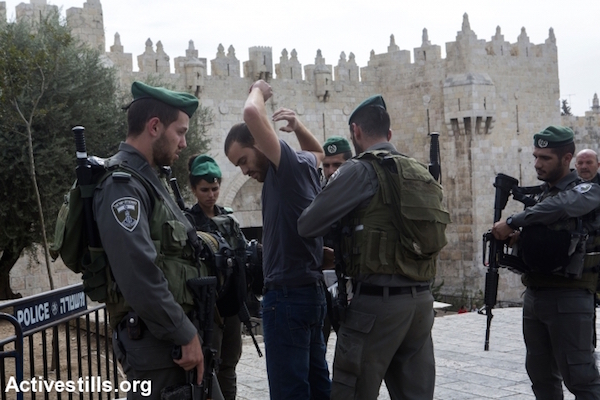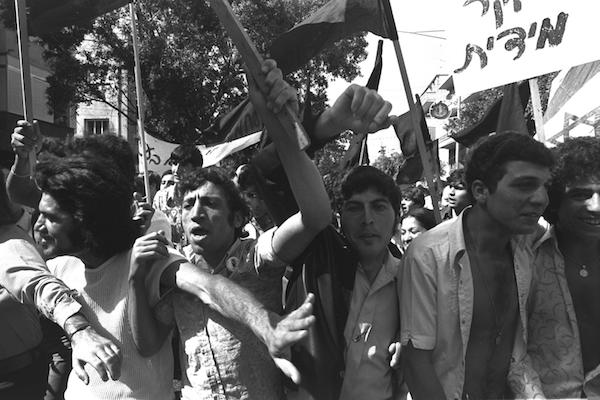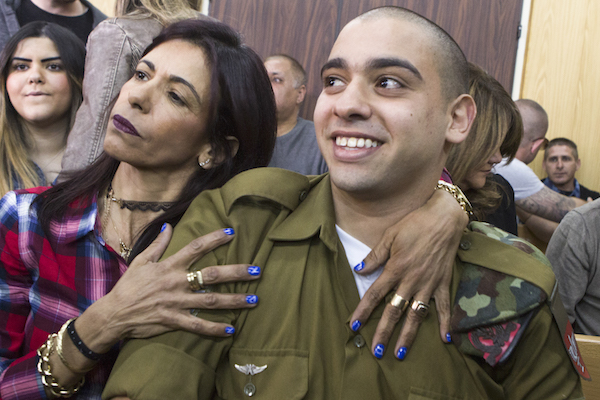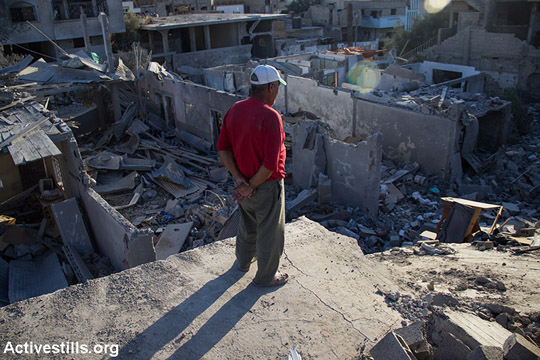Sixty-nine years after the founding of the state, the hatred between Mizrahim and Ashkenazim is the greatest threat to Israeli society. Instead of properly dealing with it, all our energy is spent on sowing a collective hatred toward Palestinians.
By Iris Hefets

Whenever “the occupation” is mentioned, someone will invariably ask about difference between Ariel University, in the West Bank, and Tel Aviv University, built on the remains of destroyed Palestinian village Al-Shaykh Muwannis. This subversive question indeed touches on an uncomfortable truth: the narrative of the settlers is that they are no different from those who fought and drew Israel’s borders in 1948. From their point of view, the Ashkenazi Jews who came to Israel in the 1930s built Jewish settlements in the dead of the night, establishing “facts on the ground” in central Israel while partaking in the libertine pleasures of free love and intellectual discourse. In the 1970s, other Ashkenazi Jews did the same, only in the West Bank.
There are, however, many differences between 1948 and the aftermath of 1967. One of them is the role of Mizrahi Jews. While the vast majority of Mizrahim arrived to Israel after 1948 — after the expulsion of the Palestinian people, the razing of Palestinians homes, and the rape of Palestinian women by Israeli fighters — they became active participants in the crimes of 1967.
After the leadership of the Jewish settlement in Palestine and Israel acted on their program to drive out some 700,000 Palestinians — since they were native to the land the Zionists wanted to settle — there was a “demographic problem” that could only be settled through bringing in Jews from Arab countries. Thus was launched a highly controlled and selective transfer of population groups from Arab and Muslim countries.
Israel’s Ashkenazi immigration institutions enacted a policy of “population dispersion,” in which new Mizrahi immigrants were sent to far-flung areas of the country. They mostly came from countries with colonial pasts or presents, either benefiting or suffering from colonial oppression and collaborating with the colonizer. They arrived in a steady and slow trickle (with the exception of Iraqi Jews, who encountered a different fate), which ensured that communities could no longer function as such and were broken up in the very beginning of the absorption process.
These communities came from a culture that was vastly different from that of the host country and its institutions, a fact that Israel exploited in order to break their spirit and subjugate them to its will. To that end they were resettled in isolated settlements governed by Ashkenazi Israelis, and were classified as “needing cultivation” on the basis of their extraction and were humiliated to no end.
The real estate New Deal
If after the Nakba, many Mizrahim were put up in homes of Palestinians exiled in 1948, after 1967 they were resettled once again.
The pretext to settle Mizrahim in the homes of displaced Palestinians was that Moroccan Jews, for example, would feel at home in Haifa’s Wadi Salib neighborhood, since the Arab architecture should be familiar to them. In practice it dressed up the fight for resources as one between Palestinians and Mizrahim, while Ashkenazim got to preside from above.
As Mizrahim discovered that their properties back home had been plundered, they were sent to live in homes looted by those who robbed them. In short, it turns out that the founding fathers of the nation, who were supposed to take care of us, in fact committed pogroms, thefts, and rapes, and they now were inviting the new arrivals to feel at home and treat themselves to a share of the spoils.
It was no coincidence that a revolt broke out in Wadi Salib in 1959 under the leadership of David Ben Harush, who saw through this tradeoff and demanded, among other things, the lifting of the military regime from Israel’s Arab citizens. Similarly, Mizrahim were resettled in other areas of the West Bank and in Palestinian neighborhoods. The Black Panthers, a movement of Mizrahim that sprung out of the depopulated Palestinian neighborhood Musrara, identified this pattern and came out against it by demanding equal rights for both Mizrahim and Palestinians.
However, after 1967, when Musrara and the neighborhood of Yemin Moshe became valuable real estate property in Jerusalem, the Mizrahim who lived there were transferred to neighborhoods such as Gilo for the benefit of Ashkenazim, who preferred living in Arab houses in Jerusalem.

Mizrahim become the invaders of the Palestinian homes, the supposedly pioneering conquerors actively enjoying the fruits of the occupation and robbery. In other words, after 1967, Mizrahim got a carrot from the government with the explicit recognition that they are entitled to compensation for their treatment at the hands of the Zionist founding fathers. If once they were put into a house that had recently been occupied by a Palestinian family, now the houses were built specifically for them. Only at closer glance does it become apparent that it is located on occupied land.
Thus the Mizrahim become more loyal allies of the government, because they actually have something to lose. If in the 1950s and 1960s the Mizrahim were not unlike those who unwittingly found themselves entangled in the state’s organized crime, after 1967 they become part of the racket and ultimately graduated to positions too senior for them to be able to quit.
The Mizrahi immigrant who arrived after 1948 did not realize she or he was drafted by the state as a double agent. The few who were aware of the ruse left, rebelled, or became internal exiles. Those who remained began to gradually identify with their handlers and in turn became the handlers of other unwitting victims. Once you become part of the mafia you cannot speak about the crimes it is committing, so you yourself are now implicated. Mizrahim now had families enjoying the spoils of the occupation and have become integrated into the military apparatus. Feminist Mizrahi women were busy cleaning their sons’ IDF uniforms.
In other words, the idea of the Israeli “melting pot” turned out to be a greater success than was ever envisaged, putting an end to the separation between Mizrahim and Ashkenazim. Everyone in that pot was boiled in the fear of the fall of the Jewish State and the revenge by those victimized by its rise.
This is the glue that holds together Mizrahim and Ashkenazim, in spite of the hatred between them. Mizrahim can enjoy their Mizrahi music all they like so long as their sons report to the Golani Brigade. That’s the deal, and both parties have good reasons to play their respective parts. If the Black Panthers said “either the cake is for all of us, or there is no cake,” the Mizrahim of the following generations said “either the cake will be an oriental one, or there will be no cake at all.”

And it’s a compromise Ashkenazim can live with. Want some marzipan on that cake, dear Mizrahim? Go for it. As long as you also enlist in all the elite units and spill blood in the name of the land your children are buried in, and which you can not longer just leave. It’s not something easily done. Just ask us, the Ashkenazim.
For what truly unites the two aforementioned situations is grief. Let’s take a look at two case studies gleaned from the recent headlines.
It’s good to have a Palestinian in the room
The Knesset hearing on the State Comptroller’s report on the 2014 Gaza War can be seen through the prism of the Ashkenazi-Mizrahi divide. During the war the entire country was united and everyone was extending hospitality to each other: when the bombing is in the north, the south plays host, and vice versa. Yet once the dust settles and the apocalypse never arrives, everyone comes to realize that the generals lied, quite brazenly, and Jewish soldiers were killed — sometimes by their brothers in arms. Haaretz then runs some anti-war editorial and the next thing you know there is a committee investigating the war’s shortcomings with a view to learning the right lessons and drawing the proper conclusions.

This time around, after Netanyahu delivered his usual spiel, the mother of Hadar Goldin, who was killed in Gaza, lashed out at him with a sentence any Tel Aviv leftist would agree with: “You made us out into the enemies of the people.” When MK Miki Zohar told her she had gone too far, Goldin ordered him to shut up, saying she doesn’t know who the hell he is in the first place. One can be forgiven for making the conjecture that had Miki Zohar not been Mizrahi, he would never have risen to Netanyahu’s defense. Were his name Benny Begin, he would most likely never have done it in the first place; if he had, Goldin would not have spoken to him that way. For Netanyahu, the Ashkenazi architect of this horror, Goldin feels helpless rage. For MK Zohar she has nothing but contempt — after all, who is he to even say anything?
Goldin was backed by Stav Shafir, who chided the Mizrahi MK, reminding him this is not way to speak to a grieving mother (of course, the fact Hadar Goldin was killed when the IDF used the infamous Hannibal Protocol is never mentioned; neither is the fact it left some 150 Palestinians dead, the same ones who were told that area was safe and they could return there). Goldin and Zohar, revealing the truth about the social divide in Israel in a moment of fury, eventually come to their senses and the former extends the olive branch saying “we all send our kids to the army.”
Order is thus restored and everyone is now mad at the Palestinians, represented this time by Joint List MK Jamal Zahalka. The holy fury directed at him acts as the social glue holding the people together. Until the next time.
Alternative Memorial Day
Another “uniting” moment can be observed in the violent scenes unleashed by the minions of right-wing rapper “The Shadow” against the predominantly Ashkenazi attendees of the leftist Alternative Memorial Day rally this past April. The buildup was already rife with incitement: the event was framed as an existential threat to Israel, and Palestinians were prevented from attending it. Filmmaker and photographer Ayelet Heller, who attended the ceremony, filmed the moment the public left the event, documenting the violent attacks by some of those who momentarily forgot that we’re all “one people.”
The right-wing protesters’ hate for Ashkenazim was dressed up as patriotism, making it all right to beat them up in the name of the law and turn the racial hierarchy on its head: in one fell swoop, the violent outburst achieves revenge, does away with internalized inferiority, and creates an ecstatic illusion that the underdogs are now in charge.
The video shows a group of wannabe tough guys, mostly Mizrahi, chanting “death to Arabs,” “death to leftists,” and other standards aimed at the “traitors.” The bellowing is briefly punctured by the Memorial Day siren. As it begins to fade out, the calls for death resume.
This scene, more than words ever could, perfectly exemplifies why Israel needs wars against the bad Arabs. Such moments place inhibitions on the hatred between Ashkenazim and Mizrahim that is ready to burst through the veneer of social unity. And since that animosity poses the greatest threat to the state, it is also the one most studiously swept under the rug. Instead of trying to solve it, leaders try to sublimate it into fear, hatred, and violence against Palestinians.
The state built on the ruins of Palestinian homes in 1948 can try to disavow its fundamentals, yet such attempts come crashing down when faced with reality. Having locked up the previous homeowner in the attic, you are now trying to get along with your rowdy neighbor who hates your guts. The memorial sirens help, but only just enough.
Iris Hefets is an Israeli psychoanalyst based in Berlin, and the former editor of the Kedma website. This post was originally published in Hebrew on Local Call. Translated from Hebrew by Philip Podolsky.


